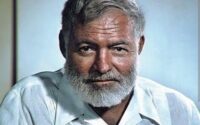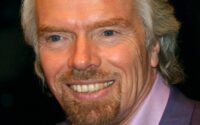Sardar Vallabhbhai Patel Biography, Early Life, career,Age 2025,Net worth
Sardar Vallabhbhai Patel stands as a key figure in India’s history. Born in the late 19th century, he grew into a leader who helped free India from British rule and unite it as one nation. People call him the Iron Man of India because of his strong will and firm decisions during tough times. His life story shows how one person can change a country’s path through hard work and smart choices.
Patel’s journey started in a small village, but he rose to become a top lawyer and then a freedom fighter. He worked closely with Mahatma Gandhi and played a big part in the Indian National Congress. After independence in 1947, as the first Deputy Prime Minister and Home Minister, he brought together over 500 princely states into modern India. This act prevented the country from splitting into many small pieces.
Today, on October 31, which marks his birth anniversary and is celebrated as National Unity Day, we remember his ideas on unity and strength. This biography covers his early years, education, entry into politics, major campaigns, roles in Congress and independence, post freedom work, and lasting impact. Readers will learn facts about his life and see how his actions still matter in today’s India. His story teaches lessons on leadership, like staying focused and working for the common good.
Who was Sardar Patel? He was a man who believed in action over words. Why does his legacy endure? Because he built the foundation for a united India that thrives today.
Early Life
Sardar Patel came from simple roots in Gujarat. He was born on October 31, 1875, in Nadiad, a town in Kheda district. His full name was Vallabhbhai Jhaverbhai Patel. His father, Jhaverbhai Patel, worked as a farmer and had served as a soldier in the army of Rani of Jhansi during the 1857 revolt against British rule. His mother, Ladba, managed the home and raised the family with values of honesty and hard work.
Patel grew up in a Patidar community, known for farming and strong family ties. As a child, he helped on the farm and learned about life’s challenges early. The family lived in a modest house, and money was tight. He had several siblings, including an older brother named Vitthalbhai Patel, who later became a lawyer and politician too.
These early experiences shaped Patel’s character. Living in rural India, he saw how British policies hurt farmers through high taxes and unfair laws. This built his sense of justice. He attended a local school where he showed quick learning skills, but his family could not afford fancy education. Still, he pushed himself to study hard.
Patel’s childhood included stories of bravery from his father’s past. This inspired him to stand up for what was right. By his teens, he already showed leadership in village matters. His early life laid the groundwork for his future role in India’s freedom struggle.
Education
Patel’s path to education was not easy, but he made it through determination. He finished his early schooling in Petlad and Karamsad villages. At age 22, in 1897, he passed the district pleader exam and started working as a lawyer in Borsad town. This was a big step, as he taught himself much of the law.
In 1910, at age 35, Patel went to London to study further. He joined the Middle Temple Inn and became a barrister. He passed his exams in just two years, topping his class in some subjects. This was impressive because he funded the trip by saving from his law practice and faced language barriers.
Back in India in 1913, he set up a successful law office in Ahmedabad. He handled criminal cases and earned a good reputation for his sharp mind. During this time, he dressed in Western suits and lived a comfortable life.
On a personal note, Patel married Jhaverba in 1893 when he was 18. They had two children, a daughter Maniben and a son Dahyabhai. Sadly, his wife died in 1909 while he was in London. He chose not to remarry and focused on his career and family.
These years built his skills in arguing cases and understanding people. His success as a lawyer gave him confidence to enter public life later. Patel’s story shows that self study and persistence can lead to great achievements.
Awakening to Nationalism
Patel’s shift to nationalism began in 1917 when he met Mahatma Gandhi. Before that, he focused on his law career. Gandhi, fresh from South Africa, was organizing farmers in Gujarat against British injustices. Patel heard Gandhi speak at a club in Ahmedabad and felt inspired by his ideas of non violent protest.
In 1918, Patel joined the Kheda Satyagraha. Farmers in Kheda district faced famine, but the British demanded full taxes. Patel led protests, asking people not to pay until relief came. He organized meetings and walked village to village. The campaign succeeded when the government reduced taxes.
This was Patel’s first big involvement in the freedom movement. He learned Gandhi’s methods of satyagraha, meaning truth force, which involved peaceful resistance. Patel gave up his fancy clothes and adopted simple khadi attire.
He also supported the Khilafat Movement in 1919, which united Hindus and Muslims against British policies on Turkey. These events woke Patel to the need for India’s independence. His work in Kheda earned him respect as a leader who cared for common people.
Rise as a Mass Leader
Patel’s fame grew with the Bardoli Satyagraha in 1928. Farmers in Bardoli taluka, Surat district, faced a 30 percent tax hike despite floods ruining crops. Patel stepped in as the leader. He formed committees in each village and trained volunteers.
The campaign lasted months. People refused to pay taxes, and the government seized lands. But Patel kept the protest non violent. Women joined too, showing broad support. In the end, on August 6, 1928, the British agreed to lower taxes and return seized property.
Villagers gave Patel the title Sardar, meaning chief or leader, for his role. This victory made him a national figure. It showed his skill in organizing large groups and negotiating.
Earlier, in 1923, he led the Borsad Satyagraha against extra police taxes. As chairman of Ahmedabad Municipality from 1924 to 1928, he improved water supply and schools. These efforts built his image as a practical leader.
Leadership in the Indian National Congress
Patel became a key player in the Indian National Congress (INC). In 1929, he helped organize the Lahore Session where INC declared full independence as its goal. He was elected INC President in 1931 at the Karachi Session. There, he passed resolutions on basic rights and economic plans.
Patel focused on building the party’s structure. He created volunteer groups and raised funds. During the 1930 Salt March led by Gandhi, Patel was arrested first on March 7, 1930, showing his front line role.
In the 1932 Civil Disobedience Movement, he faced jail again. From 1942 to 1945, during the Quit India Movement, he was imprisoned in Ahmednagar Fort with other leaders. Patel kept the party united despite differences, like between Gandhi’s spiritual approach and Nehru’s modern views.
His discipline helped INC grow into a mass organization. Patel’s work ensured smooth operations during key campaigns.
The Crucible of Independence
As independence neared, India faced division. In 1946, communal riots broke out in Calcutta, killing thousands. Patel worked on relief, setting up camps for victims.
He joined talks with British leaders like Lord Mountbatten. On June 3, 1947, the partition plan was announced, creating India and Pakistan. Patel accepted it as a way to end violence, though he preferred a united India.
After August 15, 1947, millions crossed borders as refugees. Patel oversaw their settlement, providing food and shelter. He visited riot hit areas to calm people. His efforts reduced tensions and helped stabilize the new nation.
Post-Independence Triumphs
On August 15, 1947, Patel became India’s first Deputy Prime Minister and Home Minister. He also handled Information and Broadcasting briefly. In these roles, he strengthened government systems.
Patel created the All India Services, including IAS and IPS, to run the country efficiently. He called them the steel frame of India. Facing threats, he dealt with the 1947 war over Kashmir and communist revolts in Telangana.
His firm actions ensured law and order. Patel pushed for a strong center in the new constitution, balancing state rights.
The Monumental Task
India’s biggest challenge after freedom was uniting princely states. These 562 areas were ruled by kings under British protection. After August 15, 1947, they could join India, Pakistan, or stay independent.
Patel, with V.P. Menon, led the States Ministry. They used talks, incentives like money allowances, and sometimes force. By July 1947, most states signed the Instrument of Accession.
Tough cases included Junagadh, where the Nawab joined Pakistan, but a vote in February 1948 brought it to India. In Hyderabad, the Nizam resisted until Operation Polo in September 1948 integrated it. For Kashmir, Patel helped with its accession on October 26, 1947.
This work united India geographically. Without it, the country might have fragmented.
Final Years, Death, and Immortal Legacy
In his last years, Patel’s health worsened due to heart problems. He suffered a heart attack in March 1948 but kept working. On December 15, 1950, he died in Bombay at age 75.
India mourned with a state funeral. In 1991, he received the Bharat Ratna award. The Statue of Unity, built in Gujarat and dedicated on October 31, 2018, honors him. It stands 182 meters tall, the world’s tallest statue.
Patel’s legacy lives in India’s unity. October 31 is Rashtriya Ekta Diwas. Films and books keep his story alive.
Conclusion
Sardar Patel’s life teaches us about dedication and unity. From a farmer’s son to nation’s unifier, he showed how resolve can overcome odds. His contributions to freedom and integration remain vital. As India grows, his ideas guide us toward a stronger future. Reflect on how we can apply his principles today.
FAQs
Who was Sardar Patel?
Sardar Vallabhbhai Patel was a leader in India’s independence movement and the first Deputy Prime Minister who united the country.
Why is Sardar Patel called the Iron Man of India?
He earned this name for his strong and decisive actions in uniting princely states and handling crises.
What was Sardar Patel’s role in integrating princely states?
As Home Minister, he negotiated and used strategies to bring 562 states into India from 1947 to 1949.
When and where was Sardar Patel born?
He was born on October 31, 1875, in Nadiad, Kheda district, Gujarat.
How did Sardar Patel contribute to Indian independence?
He led campaigns like Kheda and Bardoli Satyagrahas, organized Congress, and supported Quit India Movement.
What is the full name of Sardar Patel?
Vallabhbhai Jhaverbhai Patel.
When did Sardar Patel die?
He died on December 15, 1950, in Bombay.
Who was Sardar Patel’s wife?
His wife was Jhaverba, whom he married in 1893; she died in 1909.
What is Sardar Patel famous for?
He is famous for uniting India after independence and his role in the freedom struggle.
How tall is the Statue of Unity?
It is 182 meters tall.

